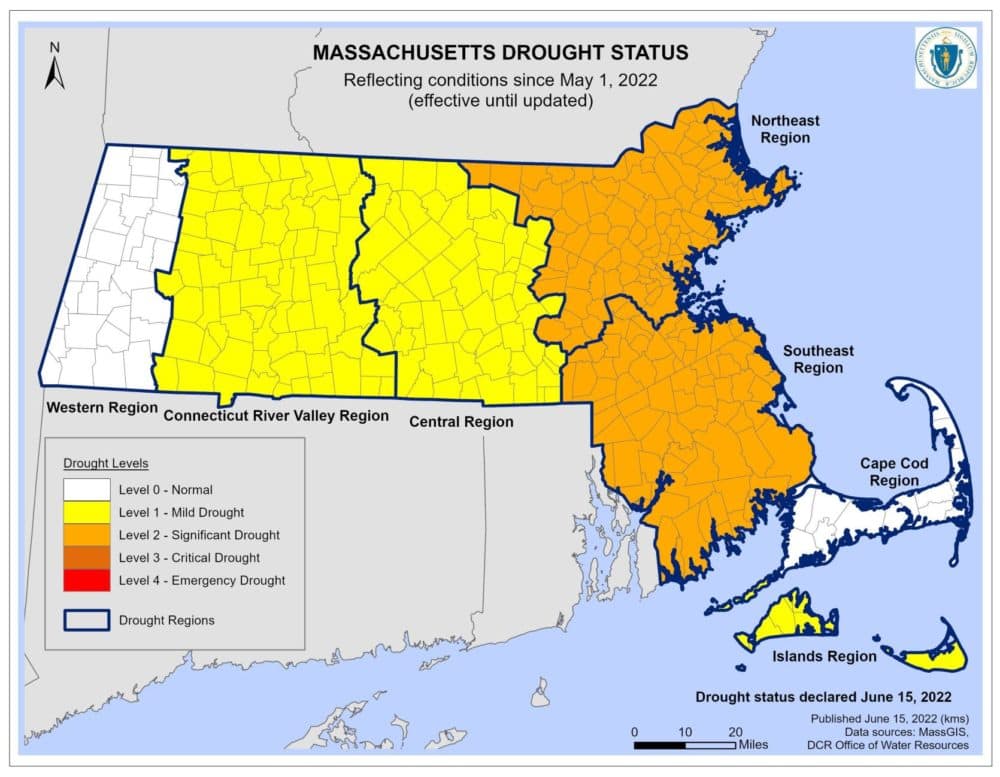Advertisement
Mass. abnormally dry heading into July

There are showers in the forecast for Monday afternoon, but the passing rainfall will not be enough to take a bite out of the drought that has overtaken much of eastern and southeastern Massachusetts in recent weeks.
Energy and Environmental Affairs Secretary Beth Card declared a "Level 2-Signficant Drought" in the northeast and southeast regions of Massachusetts, essentially Essex, Middlesex, Suffolk, Norfolk, Bristol and Plymouth counties — about two weeks ago and put Worcester, Hampden, Hampshire and Franklin counties along with Martha's Vineyard and Nantucket into the "Level 1-Mild Drought" category. Berkshire County and Cape Cod were the only parts of the state considered to be adequately hydrated.
Conditions have not improved since Card's declarations on June 15. The U.S. Drought Monitor last week reported that about 25% of Massachusetts — roughly the Interstate 95 corridor from Essex County down through Bristol County — is experiencing a moderate drought that raises the risk of wildfire, stresses trees and calls for water conservation. Another 69% of the state — basically everything but the southwestern corner of Massachusetts — is considered abnormally dry.
In response to Card's drought declarations, the state's Drought Management Plan calls for "an inter-agency Mission Group to more closely coordinate on drought assessments, impacts and response within the government" and the state is encouraging residents in drought areas to limit outdoor watering to hand-held hoses or cans before 9 a.m. or after 5 p.m. one day a week. The state is also calling on municipalities in drought areas to implement non-essential outdoor water use restrictions, to deploy drought or seasonal water rates, and to limit or ban water-intensive activities, like filling swimming pools or washing cars.
The Massachusetts Water Resources Authority, which provides drinking water for much of eastern Massachusetts, is not experiencing drought conditions, EEA said, and the Quabbin Reservoir was at 98.9% of its 412 billion-gallon maximum capacity at the start of the month, the MWRA said. The 65 billion-gallon Wachusett Reservoir was 88% full.
The state's Drought Management Task Force, which brings together officials from various state and federal agencies with professional organizations to monitor drought conditions and make recommendations for the state's response, will meet again July 11 and could, based on conditions at the time, recommend that Card change the drought classifications for certain parts of the state.